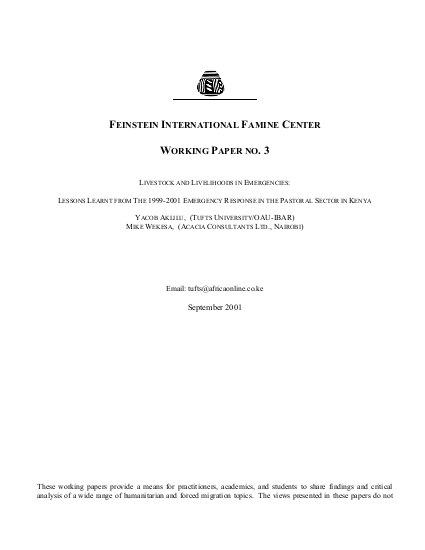
The aim of this paper is to document and share the experiences and lessons learnt from drought-related livestock-based interventions carried out during the 1999-2001 drought in Kenya. This is being done in order to contribute to improved knowledge and decision-making on drought-related emergency interventions. Documentation and dissemination of lessons learnt will contribute to the institutional memory of the relief and development community as whole, especially in relation to food security and drought management. It will also promote drought-related livestock based activities with a view to profile-raising and securing funding for such activities much more easily in future. This exercise establishes a portfolio of experience to aid in planning and implementing similar or related interventions in future. The document focuses on the livestock sector interventions in the arid and semi-arid districts of Kenya because that is where the drought effects were felt the most. It has 7 sections but could be broadly divided into two main parts. The first part provides background information and an introduction to the response activities implemented during the 1999-2001 drought; it also underscores the importance of the livestock sector to the Kenyan economy and lays out an argument for the prioritisation of the livestock and pastoralist sector in terms of both development and relief interventions. The second part provides the main findings from the assessment of the livestock-related drought response interventions, with specific case studies, and discusses the socio-economic impacts of the interventions and the lessons learnt. It concludes with recommendations/suggestions for the future.